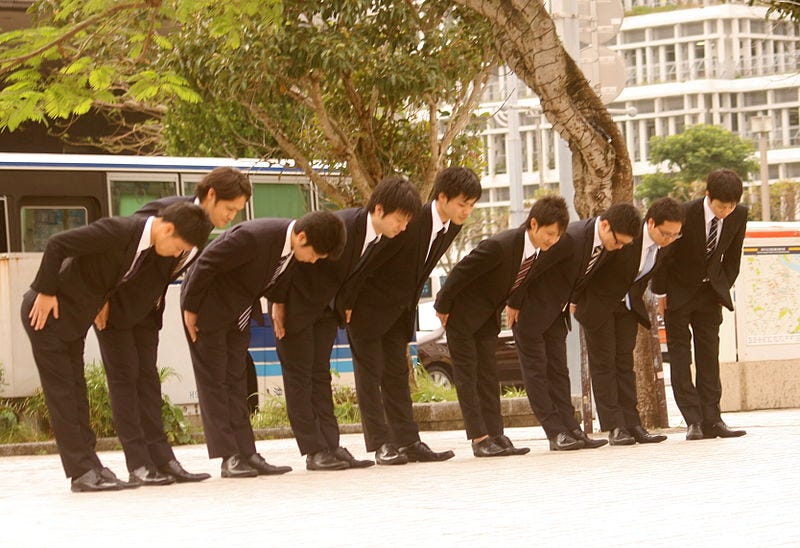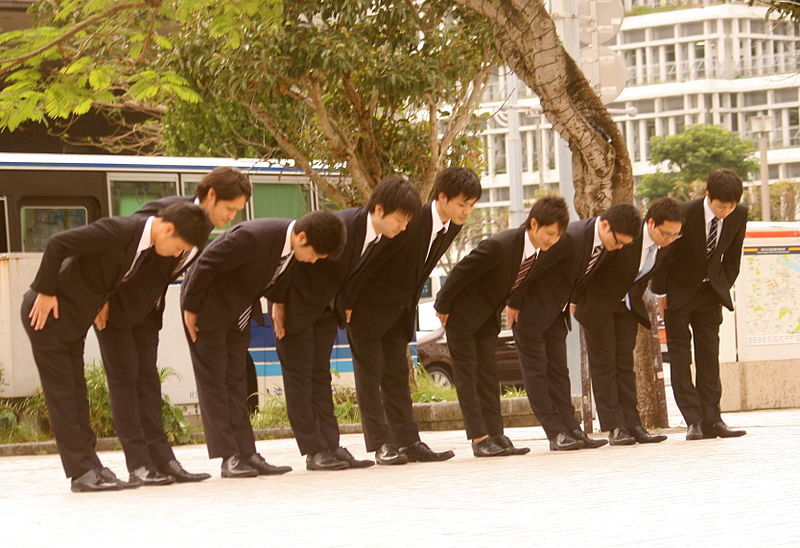
 Kotaku EastEast is your slice of Asian internet culture, bringing you the latest talking points from Japan, Korea, China and beyond. Tune in every morning from 4am to 8am.
Kotaku EastEast is your slice of Asian internet culture, bringing you the latest talking points from Japan, Korea, China and beyond. Tune in every morning from 4am to 8am.Manners in Japan are tricky, complex and sometimes hard to follow—even for Japanese people.
Over the weekend, I flipped through a book on Japanese manners I purchased here in Osaka. The book is divided into several sections, such as the correct way to perform rituals at Buddhist funerals (as well as Christian and Shinto services), the intricacies of noshigami and seasonal gifts, the proper way to address and write letters, and more. The book is aimed at shakaijin (社会人), which means literally means “a member of society,” but denotes adults and working people.
Full disclosure: The manner book was published by Kodansha, and Kodansha International, which no longer exists, published my first two books. My most recent books, such as Japanese Whisky, were published by Tuttle.
The Manners Encyclopedia has the inevitable bowing and business card sections. There are bits on the right way to sit, how to politely remove and fold your coat and even the proper way to pick things up off the ground (don’t bend over, but kneel down without touching your knees on the ground and pick up the dropped object). There is also an array of information on table manners, some of which is covered here as well as how to correctly and politely use chopsticks and other tableware. Japan can be an incredibly mannered society.
To give an idea of how complex things can get, here is a section on business manners for how people in a company should ride in an elevator, on a train, in a taxi or in a private car. In the drawings, the number 1 indicates the most senior or important person. The other numbers are of descending importance.
Advertisement
So, for elevators, if there are two button panels, person 3 and person 4 stand in front of each panel with persons 1 and 2 in the back. If there is only one button panel, the person 4 stands there.
When riding taxis, person 1 sits behind the driver in the backseat, while person 2 sits in the other back window seat. Person 3 sits in the middle back seat, while person 4 should sit up front with the driver. But if the car is a private automobile for, let’s say golf outing, then person 1 sits up front with the owner of the car, while person 3 sits backseat in the middle.
Advertisement
For trains with four seats together, person 1 sits next to the window in the direction the train is traveling. Person 2 sits across from person 1 in the window seat. If there are two rows of three seats, then person 5 and 6 will sit in the middle. Person 1 will, once again, sit facing the direction the train is traveling.
Complicated! But this is scratching the surface. A couple of the book’s Amazon Japan reviews say the Manners Encyclopedia has just the most basic Japanese manners, which, if you aren’t already a manner master, might make it a good place to start.













